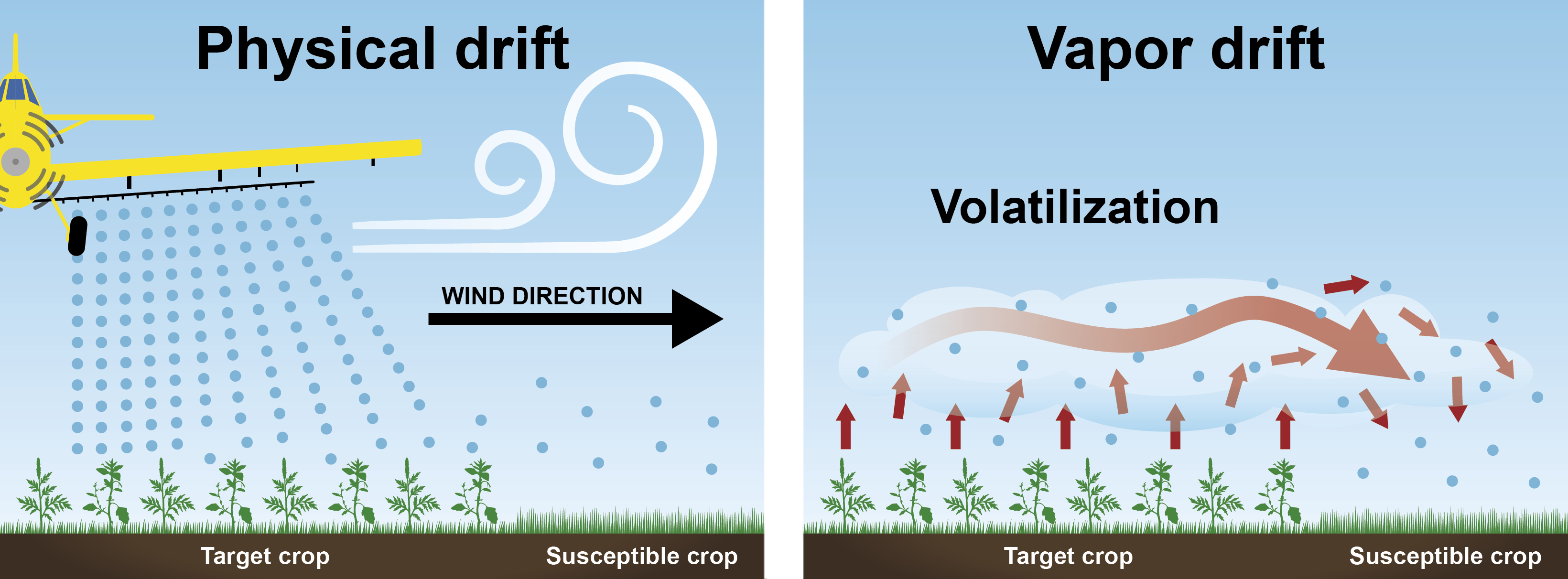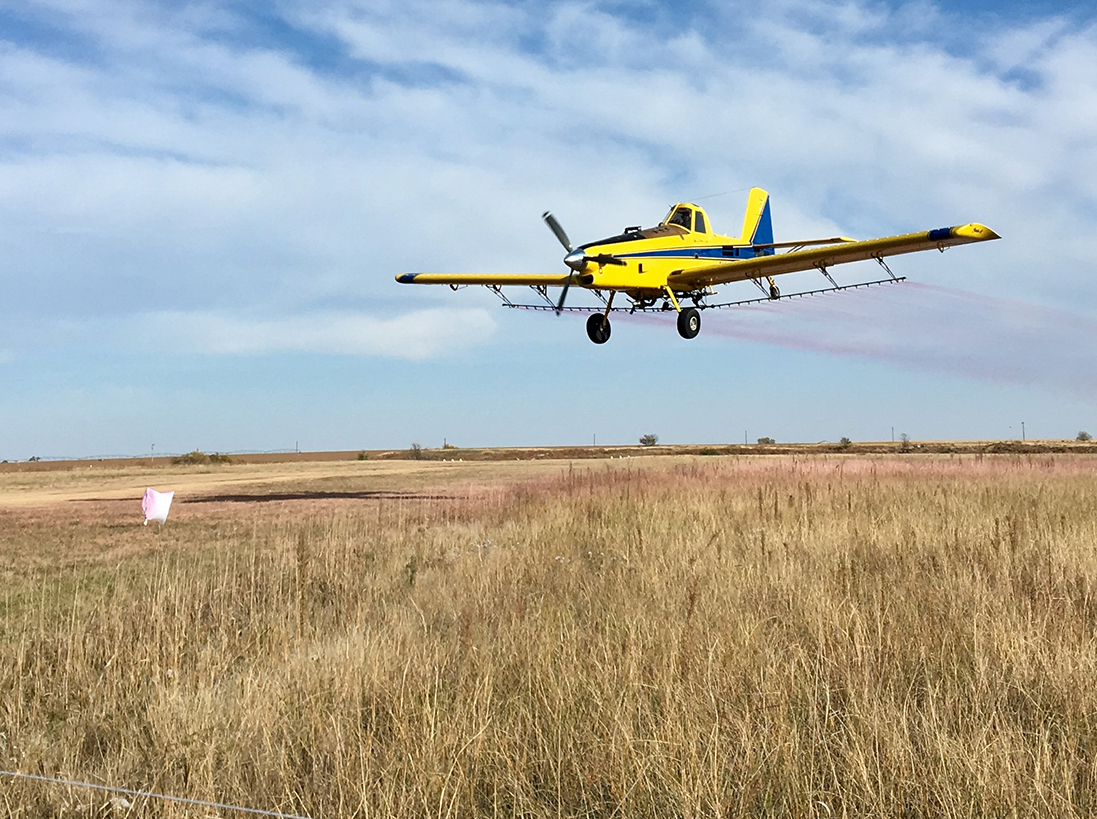Top tips and new tools for aerial herbicide application

Aerial herbicide application provides an efficient way to treat large areas of rangeland, pasture and non-crop areas. However, if not done correctly, the potential for damage to nearby desirable plants can be significant. For land managers seeking to use aerial application for weed control, the combination of application best practices and new, nonvolatile herbicides can offer a safer way forward.
Physical drift and vapor drift both need to be considered when planning for aerial herbicide application. Although often conflated, the two are distinct issues.1
Vapor drift refers to volatility, which is the ability of herbicides to vaporize and transform from liquid to a gas, increasing the potential for off-target movement. This is a common problem with ester-based herbicides, which are formed with an alcohol, making it easier for absorption through plant leaves.2
Physical drift refers to the airborne movement of herbicides in a non-gaseous form from the target location into adjacent areas.1 Off-target movement can occur in vapor, droplets, mists, aerosols, dusts or other types of fine spray particles. It can occur with any type of herbicide, but steps can be taken to prevent or reduce it.

Another decision that managers can make to reduce the potential for off-target movement during the aerial application is to select a product that has low volatility.


New HighNoon® herbicide with Rinskor® active is a nonvolatile herbicide that does not include 2,4‑D or dicamba. Instead, HighNoon contains aminopyralid combined with florpyrauxifen-benzyl, a new class of synthetic auxin chemistry branded as Rinskor active. HighNoon controls more than 140 broadleaf and invasive weeds and it maintains grass safety. HighNoon is not a Restricted Use Pesticide and can be used as an aerially applied herbicide when best practices are followed:
There can be several advantages to the aerial application of herbicides, such as addressing wide-spread or ranging weed challenges. Although off-target movement continues to be a consideration when herbicides are applied by air, the proper equipment, products and techniques allow it to be effectively managed.
References:
1 Gratkowski, H. and Stewart, R. “Aerial spray adjuvants for Herbicidal Drift Control.” USDA Forest Service General Technical Report, 1973, https://www.fs.fed.us/pnw/pubs/ pnw_gtr003.pdf.
2 Hager, Aaron. “Formulations of 2,4-D: Acids, Esters, and Amines,” University of Illinois Bulletin, 2007, Vol 7. http://bulletin.ipm.illinois.edu/print.php?id=713.
3 O’Connor-Marer, Patrick. “Aerial Applicator’s Manual: A National Pesticide Applicators Certification study guide.” National Association of State Departments of Agriculture Research Foundation. https://www.agaviation.org/Files/RelatedEntities/Aerial_Applicators_Manual.pdf.
4 “The Top 10 Pesticide Application Mistakes.” Ag Air Update, 2015, https://www.agairupdate.com/the-top-10-pesticide-application-mistakes/. ™
Hay from grass treated with HighNoon™ within the preceding 18 months can only be used on the farm or ranch where the product is applied unless allowed by supplemental labeling. Under normal field conditions, HighNoon is non-volatile. HighNoon has no grazing or haying restrictions for any class of livestock, including lactating dairy cows, horses (including lactating mares) and meat animals prior to slaughter. Label precautions do apply to forage treated with HighNoon and to manure and urine from animals that have consumed treated forage. HighNoon is not registered for sale or use in all states. Contact your state pesticide regulatory agency to determine if a product is registered for sale or use in your state. Always read and follow label directions.
Sharing innovative research, success stories and tips with invasive plant managers.





